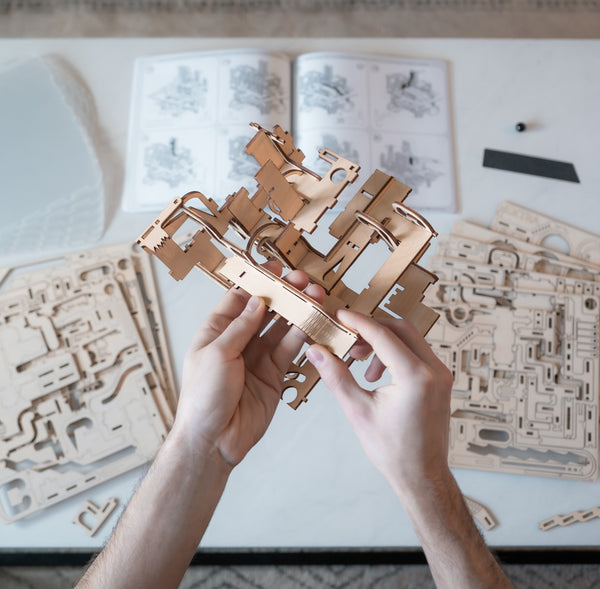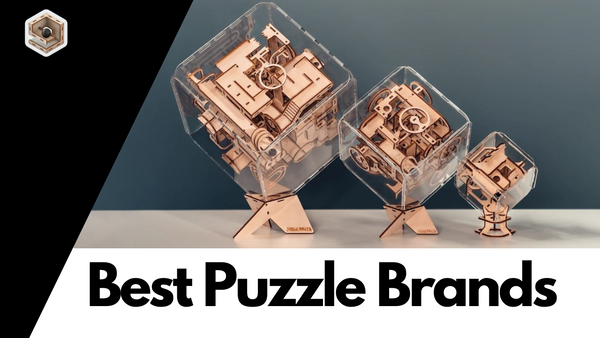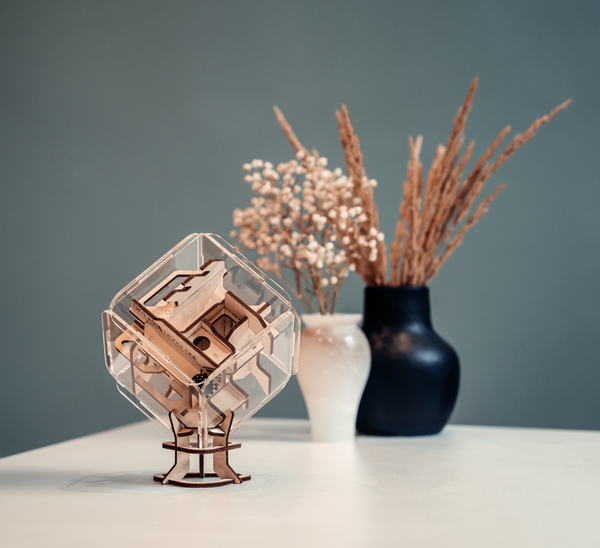
Are 3D puzzles hard?
What makes a 3D puzzle difficult?
It's a common question asked by new enthusiasts as they get their first taste of the immersive world of 3D puzzles. Well, the short answer is "kind of." You might be asking yourself why you would want to buy and build a 3D puzzle if it's going to be hard and frustrating, but the truth is that 3D puzzles make for a fun challenge either alone or as a way to spend time with friends and family as long as you pick the right one for you.The first thing you should know about 3D puzzles is that they're not all created equal—some are more difficult than others. In order to figure out whether or not your puzzle will be easy or difficult, you'll need to consider three things: the types of pieces, the number of pieces, and your experience level.
The types of pieces are what impact the difficulty of 3D puzzles the most.
The first thing we'll look at is the types of pieces in your puzzle. Most 3D puzzles have different shapes for different parts of their structure, and usually utilize one a few different materials. Some shapes are more delicate than others which may cause them to break more easily, but this risk is reduced if the pieces are made of a strong material. So how can you tell if there will be pieces that are prone to breaking or bending? The best way to determine this is by looking at what other people have said about the particular puzzle—if they've complained about having trouble with certain shapes fitting together or pieces breaking then it's more likely you will encounter the same issue.
While there are many materials a 3D puzzle can be made from, we’ve broken down some details on two of them: cardboard and wood.
Cardboard – These puzzles are very light in weight, and easy on the wallet too. The forgiving nature of cardboard makes fitting various pieces together pretty straightforward. One of the major drawbacks however is the delicate nature of the pieces. Each piece is more likely to break (or bend) compared to puzzles made from more durable materials. The finished build is also more susceptible to damage if dropped or crushed.
Wood – Puzzles made from wood are going to be more durable than cardboard in almost every circumstance, but also come with a higher price tag. The pieces are more rigid which can pose a challenge during assembly if they were not produced and/or cut with a high level accuracy and precision. You will want to pay close attention to what people are saying about a particular brand’s product quality. A finished puzzle made from wood is going to stand up well to the test of time and looks great out on display.
3D puzzles that have more pieces are more challenging to complete than those with fewer pieces.
Aside from puzzles with more pieces taking longer to assemble, they also tend to be more challenging due to the smaller average size of each piece. The smaller pieces are going to pose more of a challenge to assemble together, especially halfway through assembly when existing pieces may start getting in the way. Depending on your experience level (which we will get into in the next section), this can either make for more hours of enjoyment or for a frustratingly long experience trying to build the puzzle.
In contrast, puzzles with fewer pieces tend to be easier because their larger average piece size means less fiddling and accuracy is needed for assembly, and the overall build is completed in less time.
The difficulty level of 3D puzzles are subjective to the puzzler.
Ultimately, the difficulty of a 3D puzzle is not an objective measure and can be defined by each individual’s experience and skill level. Though a puzzle may have small pieces, and hundreds of them at that, those with experience building 3D puzzles will likely encounter few issues, whereas beginners may be overwhelmed or frustrated. Most beginners would be better off steering towards a fairly simple puzzle for their first go around.
You should also take into consideration your dexterity skills when assessing the difficulty of 3D wooden puzzles. The added difficulty of depth perception when dealing with three dimensions can increase the complexity of a puzzle as a whole. This is also often what can make them incredibly satisfying to build and look at when completed.
3D puzzles come in all shapes and sizes, but there’s one out there for you!
The difficulty level of a 3D puzzle varies from model to model and brand to brand. When searching for your next 3D puzzle keep the following questions in mind to determine the difficulty of a 3D puzzle:
- What kind of 3D puzzle is it? Is it a Jigsaw, Interlocking, or Stick-Together type of 3d puzzle?
- How many pieces does it have? The more pieces there are, the longer the overall time needed to complete the puzzle.
- What is the shape of the pieces and what material are they made from? The durability and cost of the puzzle is heavily swayed here.




1 comment
I’m not sure where you’re getting your information, but good topic. I needs to spend some time learning much more or understanding more.
Thanks for great info I was looking for this information for my mission.